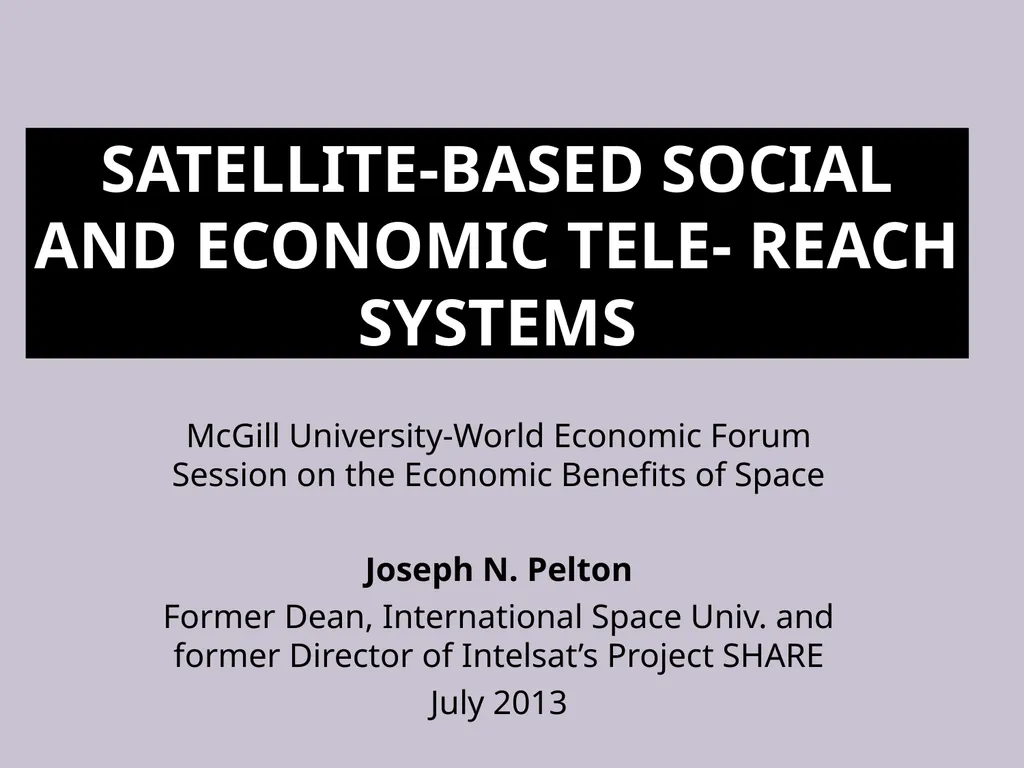
Satellite-Based Social and Economic Tele- Reach
Author: kittie-lecroy | Published: 2025-08-16
Description: Satellite-Based Social and Economic Tele- Reach Systems McGill University-World Economic Forum Session on the Economic Benefits of Space Joseph N. Pelton Former Dean, International Space Univ. and former Director of Intelsats Project SHARE
Download Presentation
Download the PPT/PDF: Download
Transcript:
Loading transcript